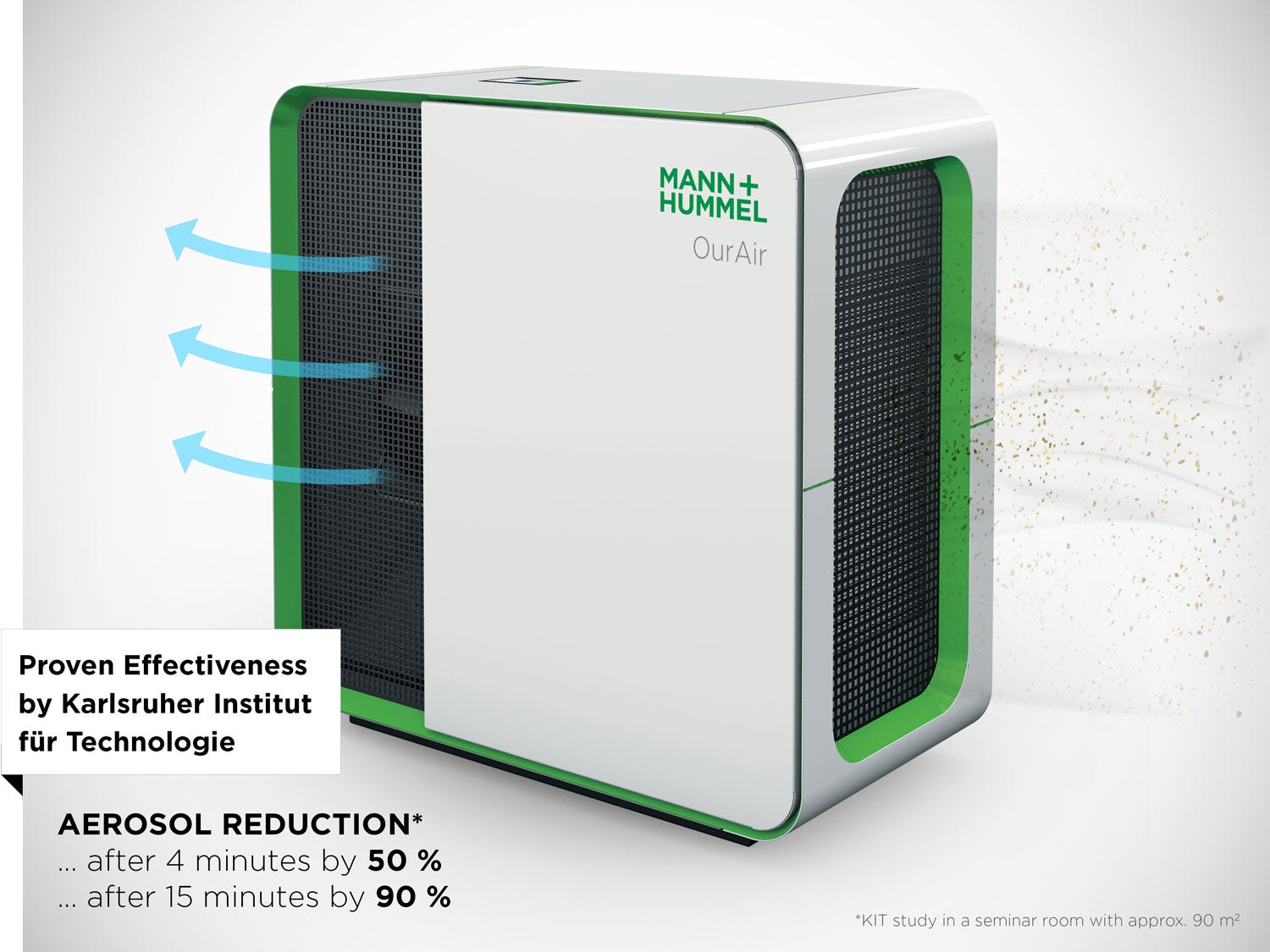Antiviral air purifier test
OurAir
Several studies by the Karlsruhe Institute of Technology confirm the effectiveness of the OurAir SQ 2500 and the OurAir TK 850 (predecessor of the OurAir SQ 1750)
It is now known that the Coronavirus (COVID-19) is mainly spread through aerosols in the air. Aerosols are tiny droplets that are emitted into the ambient air through breathing and speaking, and can then spread throughout the room. In order to reduce the concentration of viruses in the air, it is necessary to either replace or purify the air. Wherever effective ventilation is not possible, antiviral air purifiers come into play. But how effective are they really? Do they help to reduce the aerosol levels?
The KIT (Karlsruhe Institute of Technology) has conducted several studies and confirmed that the room air purifiers OurAir TK 850 (predecessor model of the OurAir SQ 1750) and OurAir SQ 2500 significantly reduce the number of particles in the room and thus contribute to reducing the risk of infection. Read more about the scientific studies.

Impact of OurAir SQ 2500 operation on ambient air particle concentration in a closed indoor environment - seminar room
The study allows two main conclusions:
- The use of the OurAir SQ 2500 air purifier results in a significant reduction of the aerosol load within a short period of time (after 4 minutes by 50%, after 15 minutes by 90%)
- The air flow rate, which has a direct effect on the air exchange rate (= filter rate), is decisive for the speed of the reduction and for the effectiveness of the air
Increasing effectiveness through simulation
The effectiveness of the room air purifier, i.e. that an air purifier reduces aerosols in the room, is one thing. How quickly this happens is another. Besides verifying the effectiveness, the KIT Karlsruhe studies also proved that, among other things, the positioning of the air purifier is also crucial in determining how quickly the concentration of aerosols - and thus the risk of infection - decreases.
With optimal set-up, the speed of aerosol reduction can be significantly increased, in some cases even doubled. Using the latest in-house simulation methods and our many years of expertise in this field, we can determine the optimum number and positioning of the air purifiers even before they are purchased and installed.